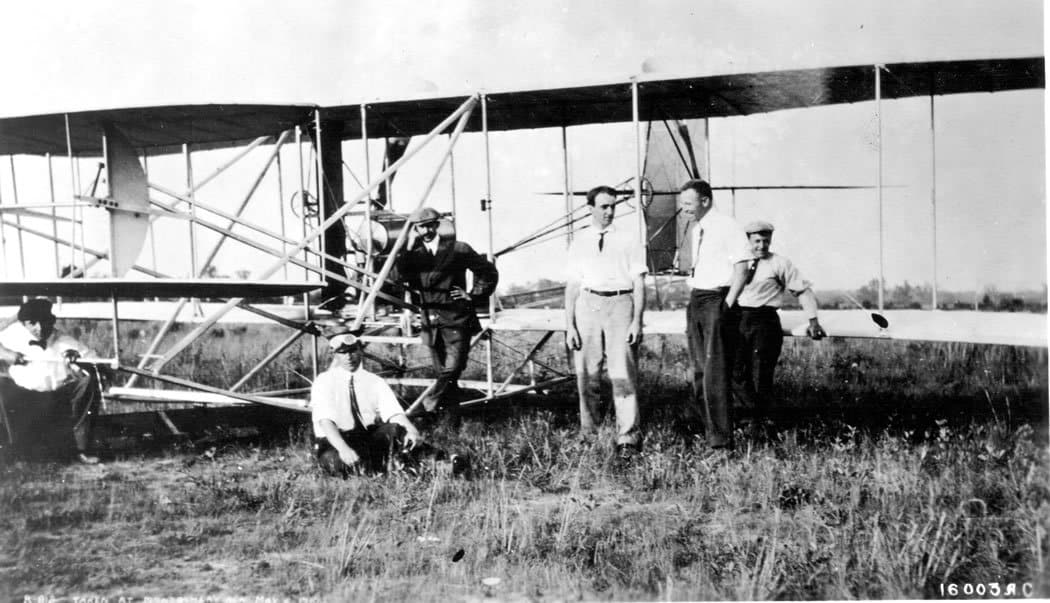Evolution of Aviation Safety: From Wright Brothers to Safety Management Systems
Evolution of Aviation Safety: From Wright Brothers to Safety Management Systems
Introduction
In this blog series, I will chronicle the evolution of flight starting with the Wright Brothers’ developments and look at how far we have come through the aviation of today. In the annals of aviation history, 1903 marks a pivotal year. On a windswept beach in North Carolina, the Wright brothers achieved the first powered flight, catapulting humanity into the skies. Little did they know that their pioneering spirit would start a centuries-long journey marked by triumphs, tragedies, and a relentless pursuit of safety.
The Wright Brothers’ First Flight
On December 17, 1903, two brothers from Dayton, Ohio, named Wilbur and Orville Wright, were successful in flying an airplane they built. NASA, 2008

Their powered aircraft flew for 12 seconds above the sand dunes of Kitty Hawk, North Carolina, making them the first men to pilot a heavier-than-air machine that took off on its own power, remained under control, and sustained flight. NASA, 2008
Early Aviation and Initial Tragedies

The early years of aviation were thrilling yet perilous. Just five years after their historic flight, tragedy struck during a demonstration flight by Orville Wright. Tragedy struck during a flight on September 17, 1908, when the right propeller on the 1908 Flyer fouled a guy wire, causing the plane to crash to earth. USAF Nat Museum

Orville Wright was seriously injured, while Lt. Thomas E. Selfridge, along on the flight as a passenger, was fatally injured, thus becoming the first person to die as the result of an airplane accident. USAF Nat Museum It was the world’s first airplane crash, a stark reminder of the inherent risks in this new mode of transportation.
The Introduction of Aviation Regulations

Recognizing the urgent need for oversight, governments worldwide began to step in. Aviation industry leaders believed the airplane could not reach its full commercial potential without federal action to improve and maintain safety standards. FAA, 2021 At their urging in 1926, the United States enacted the Air Commerce Act. FAA, 2021
- Charged the Secretary of Commerce with fostering air commerce, issuing and enforcing air traffic rules, licensing pilots, certifying aircraft, establishing airways, and operating and maintaining aids to air navigation. FAA, 2021
- A new Aeronautics branch in the Department of Commerce assumed primary responsibility for aviation oversight. FAA, 2021
- This act introduced pilot licensing, aircraft airworthiness certificates, and established rules for air traffic control and accident investigation for the first time — a crucial turning point in making air travel safer.
Further Developments in Aviation Safety Oversight
The growth of aviation required more oversight and in 1934 the Department of Commerce renamed the Aeronautics Branch the Bureau of Air Commerce. FAA, 2021
While the Department of Commerce worked to improve aviation safety, a number of high-profile accidents called the department’s oversight responsibilities into question. FAA, 2021
Following more accidents, President Franklin Roosevelt signed the Civil Aeronautics Act in 1938. FAA, 2021

- Established the independent Civil Aeronautics Authority (CAA), with a three-member Air Safety Board that would conduct accident investigations and recommend ways of preventing accidents. FAA, 2021

- In 1940, President Roosevelt split the CAA into two agencies, the Civil Aeronautics Administration, which went back to the Department of Commerce, and the Civil Aeronautics Board (CAB). FAA, 2021
Human Factors and System Safety
However, it wasn’t until the mid-20th century that aviation safety truly began to soar. The concept of “Human Factors” emerged, focusing on how human performance impacts safety. This shift led to improvements in crew training, cockpit design, and operational procedures, significantly reducing accidents caused by human error.
The 1970s brought another leap forward with the advent of System Safety. Born out of a collective dissatisfaction with reactive safety measures, System Safety advocated for a proactive approach to design and operations. Erickson, 2006
- By systematically identifying and mitigating risks before they could manifest, this methodology revolutionized aviation safety standards.
- System Safety was an outgrowth of the general dissatisfaction with the fly-fix-fly approach to design (i.e., fix safety problems after a mishap has occurred) prevalent during the early years. Erickson, 2006
Safety Management Systems (SMS)
Building upon the foundation of System Safety, Safety Management Systems (SMS) emerged as the gold standard for ensuring aviation safety. SMS is designed to integrate safety into every aspect of an organization’s operations, from frontline procedures to executive decision-making. It represents a cultural shift towards continuous improvement and risk management, empowering aviation providers to anticipate and prevent accidents rather than simply react to them.
Today, SMS is not just a recommendation—it’s a requirement endorsed by global aviation bodies like the International Civil Aviation Organization (ICAO) and implemented by civil aviation authorities worldwide. By adopting SMS, organizations not only enhance safety but also improve operational efficiency, customer satisfaction, and regulatory compliance. The Safety Management System has become a standard for aviation. FAA, 2021
Conclusion
Looking ahead, the evolution of aviation safety continues unabated. As technology advances and air travel becomes more accessible than ever, the lessons learned from past tragedies propel us towards a future where safety is not just a goal but a fundamental pillar of the industry. From the humble beginnings on a North Carolina beach to the sophisticated Safety Management Systems of today, each chapter in aviation safety’s history reminds us of our commitment to making the skies safer for all.

Source: FAA
In conclusion, while the journey from the Wright Flyer to modern airliners has been marked by challenges and setbacks, it is also a testament to human ingenuity and resilience. As we celebrate the achievements of aviation pioneers, we also look forward to a future where every flight is not only efficient and convenient but above all, safe.
Please look for follow-on blog posts that will continue to chronicle our goals for Aviation Safety.
Keywords: Safety Management Systems, Aviation Safety, System Safety
References:
- National Aeronautics and Space Administration, NASA, 2008
- National Museum of the United States Air Force, USAF Nat Museum
- Federal Aviation Administration, FAA, 2021
- Erickson, 2006. A Short History of System Safety. Journal of System Safety, Vol 32, No. 3.








